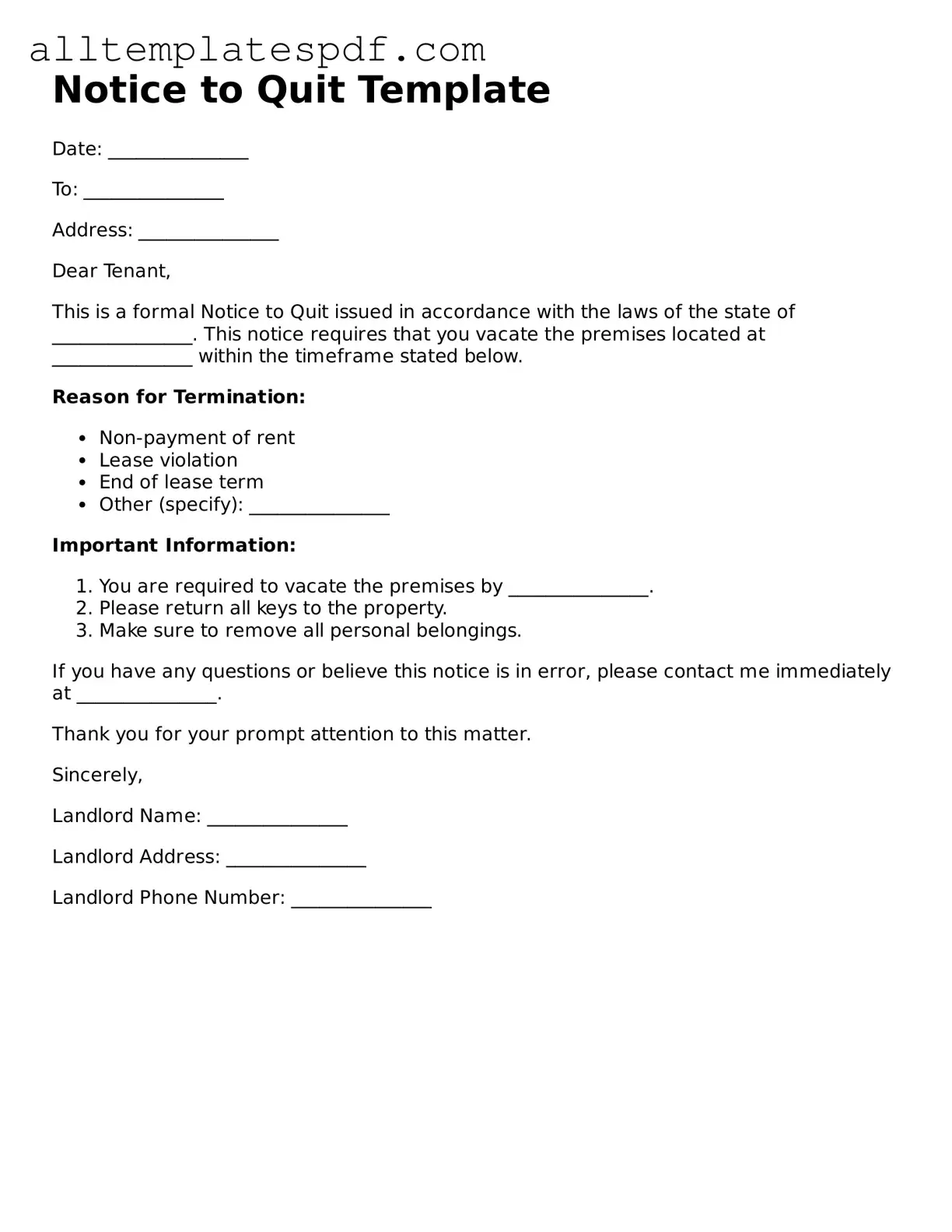When filling out a Notice to Quit form, many individuals inadvertently make mistakes that can lead to complications down the line. Understanding these common errors can help ensure that the process runs smoothly and legally. Here are seven mistakes to avoid.
One frequent error is failing to provide accurate tenant information. It’s essential to include the full name of the tenant and the address of the rental property. Missing or incorrect details can cause delays and may even render the notice invalid. Ensure that the information is clear and complete.
Another common mistake is not specifying the reason for the eviction. While some states require a reason, others do not. However, providing a clear explanation can help in the event of a dispute. Whether it’s non-payment of rent or lease violations, clarity is key.
Many people overlook the importance of including the correct date. The Notice to Quit should indicate when the tenant must vacate the premises. If the date is ambiguous or incorrect, it can lead to confusion and potential legal issues. Always double-check the timeline before submitting the form.
Some individuals forget to sign the form. A Notice to Quit must be signed by the landlord or the authorized agent. Without a signature, the notice lacks validity and may not be enforceable. Remember, a simple signature can make a significant difference.
Additionally, failing to deliver the notice properly is a common oversight. Each state has specific rules regarding how a Notice to Quit should be served. Whether it’s through personal delivery, certified mail, or posting on the property, adhering to these regulations is crucial. Ignoring these requirements can lead to legal challenges.
In some cases, people neglect to keep a copy of the Notice to Quit for their records. Documentation is vital in any legal process. Retaining a copy can serve as proof of the notice and the date it was delivered, which can be invaluable if disputes arise later.
Lastly, many individuals underestimate the importance of understanding local laws. Each jurisdiction may have different requirements regarding the Notice to Quit process. Failing to familiarize oneself with these regulations can lead to mistakes that could jeopardize the eviction process. Always research the specific laws applicable to your area.
